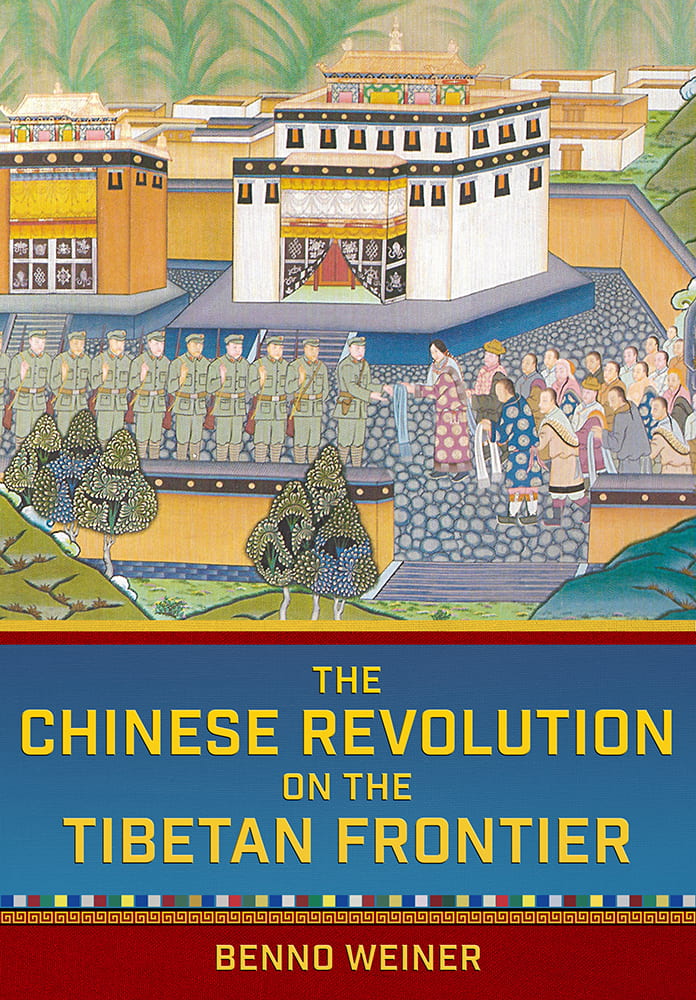The author of our latest guest post is Benno Weiner, Associate Professor in the Department of History at Carnegie Mellon University. He is author of The Chinese Revolution on the Tibetan Frontier (Cornell University Press, 2020) and co-editor of Conflicting Memories: Tibetan History under Mao Retold (with Robert Barnett and Françoise Robin, Brill, 2020).
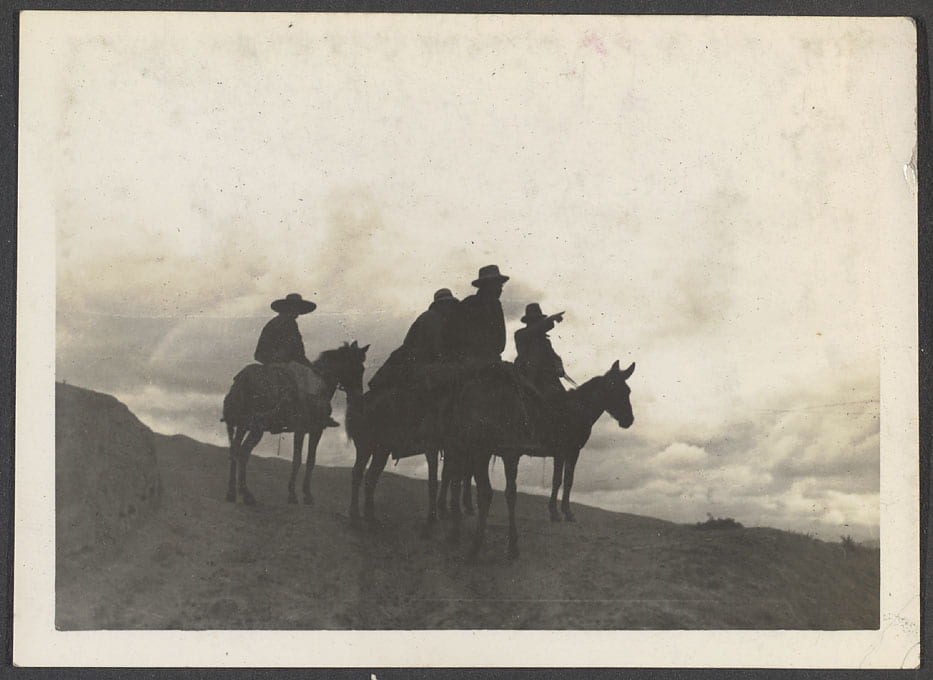
Amdo Tibetans in Qinghai Province, ca. 1933, photographed by Rev. Claude L Pickens Jr. HPC ref: Hv44-210.
In recent years, the United Front has made headlines as the agency tasked with polishing China’s image abroad through such “soft power” instruments as sponsoring Confucius Institutes (language and cultural centres installed on college campuses around the globe) and the co-option of overseas Chinese willing to quietly promote the interests of the Chinese Communist Party (CCP). However, scholars have paid relatively little attention to the role of the United Front in China since 1949, where it was tasked with gaining the vital support of important non-Party elements of Chinese society and incorporating them into the new nation. This is despite Mao Zedong himself having declared the United Front, along with Party building and armed struggle, one of the ‘three magic weapons’ of the Chinese Revolution. What limited scrutiny it has received has mainly focused on the Party’s attempts to co-opt and control non-Party intellectuals. By contrast, little scholarship has been directed toward another major target of the United Front—what the CCP refers to as ‘minority nationalities.’
The Chinese Revolution on the Tibetan Frontier is the first in-depth study of an ethnic minority region during the first decade of the People’s Republic of China (PRC): the vast borderland region known to Tibetan speakers as Amdo. The tendency has been to assume that the United Front as deployed in ethnic minority areas was little more than a cynical ruse meant to placate local elites until the CCP was in position to forcibly implement its radical agenda. Instead, I argue that in 1950s Amdo the United Front was considered by its proponents to be a progressive, transformative methodology of nation building. It was designed to be the primary means by which non-Chinese people—who inhabited a full 60 percent of the landmass of the PRC—would be transformed into citizens of socialist China.
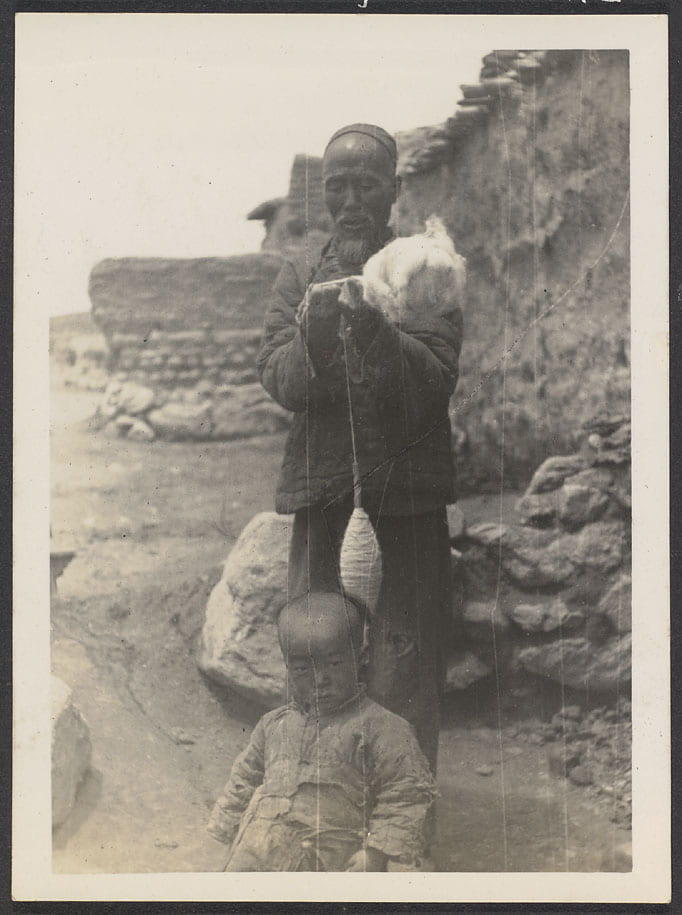
Hui Muslim man spinning yarn with a child, Qinghai, ca. 1933, photographed by Rev. Claude L Pickens Jr. HPC ref: Hv44-120.
The majority of Amdo (sometimes called northeast Tibet) lies in present-day Qinghai province, with the remainder spilling into neighbouring areas of southern Gansu and northern Sichuan. As demonstrated by these wonderful photographs by the Reverend Claude L. Pickens Jr. — who traveled in northwest China from 1933 to 1936 as part of the China Inland Mission — Amdo has long been an ethnocultural frontier where the Tibetan, Chinese, Mongolian, and Central Asian worlds meet. Its expansive but sparsely populated southern and western grasslands are primarily populated by Tibetan and, to a lesser degree, Mongol and Kazakh pastoralists, while the more densely populated agricultural districts along Amdo’s eastern edges have long been home to a multi-confessional mix of Chinese, Tibetan, Mongol and Turkic-speaking communities. In the eighteenth century, Amdo was incorporated into the expanding Qing Empire (1644-1912). However, as in most imperial borderlands, oversight was generally light and rule was exercised indirectly through a myriad of local powerbrokers and religious leaders who were awarded honours, titles, and rewards in exchange for expressions of loyalty and their service as intermediaries between the imperial state and local society.
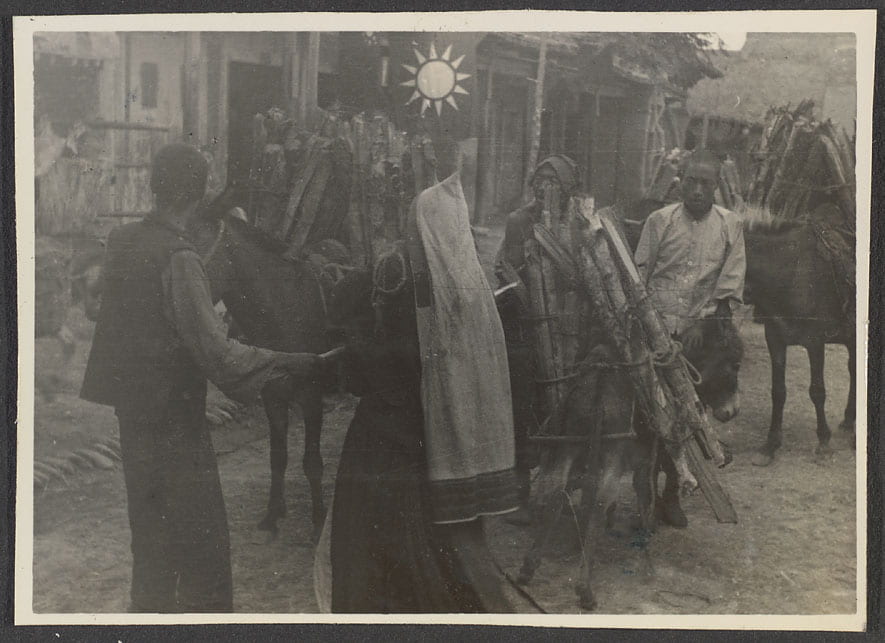
Tibetans in Xunhua County, Qinghai, with the flag of the Kuomintang behind them, ca. 1933, photographed by Rev. Claude L Pickens Jr. HPC ref: Hv44-144.
After the collapse of the imperial system in 1912, Amdo came under the contested rule of the ‘Ma-family warlords.’ Chinese sources reserve particular disdain for the Hui Muslim Ma clan—their ethnic and religious pogroms are said to have severely damaged the historical unity between the region’s various nationalities. And confrontation between the Mas and their rivals was often marked by tremendous cruelty. Yet despite their militaristic, authoritarian instincts, time and again the Mas were forced to negotiate with an assortment of the region’s religious and secular authorities, who were again granted positions and rewards in exchange for their support. These were often the same people and institutions that had long served as intermediaries between the imperial state and local communities. Broadly speaking, Amdo’s political elite continued to operate according to imperial practices and assumptions.
This, then, was the challenge the Communist Party faced in Amdo and many other non-Han (ethnic Chinese) regions of the former Qing Empire: how to transform loosely governed imperial possessions into component parts of a unified, consolidated nation-state. While state building presumably could be accomplished through force, Party leaders realized that nation making required constructing narratives and policies capable of convincing Amdo’s inhabitants of their membership in a wider political community. The CCP then, as now, was insistent that China was a historical, inseparable, multinational state. Yet they recognized that many non-Han communities held deep grievances toward the Han majority and were suspicious of the Party and its platforms. According to CCP leaders, this was due to discrimination and exploitation committed by the Han against ethnic minorities over centuries, what it referred to as “Great Han chauvinism.” If the Party wanted to gain the support of ethnic minorities, it first needed to eradicate the cause of their antipathy.
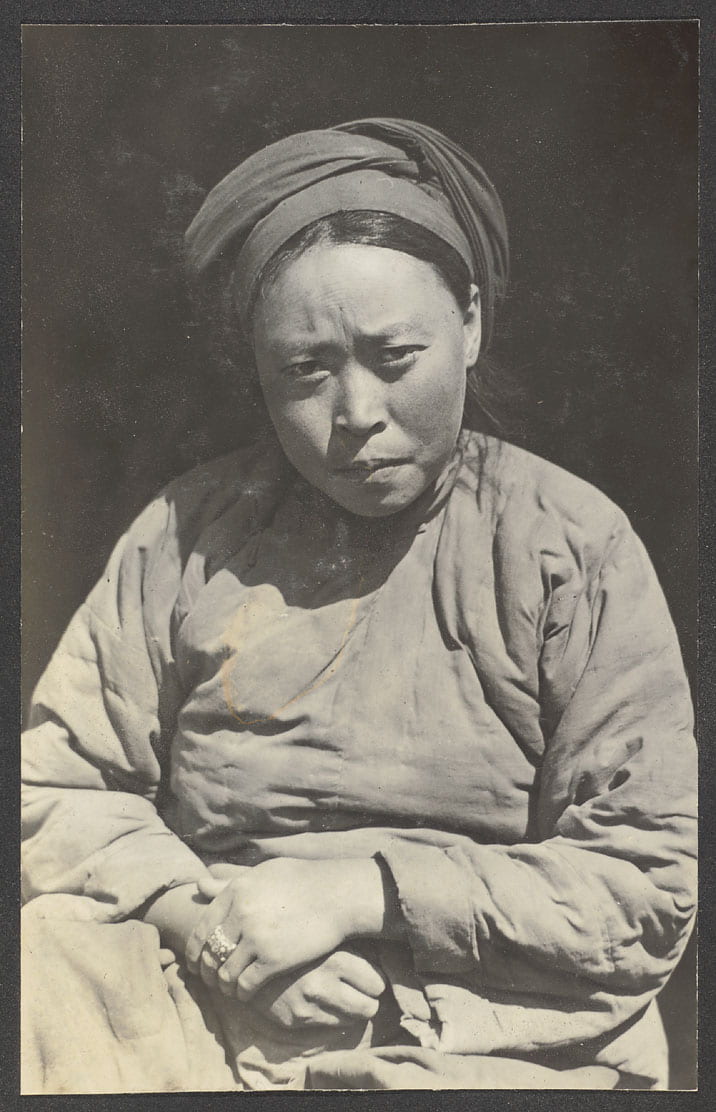
Turkic Salar woman, Xunhua County, Qinghai, ca. 1933, photographed by Rev. Claude L Pickens Jr. HPC ref: Hv44-131.
In its attempt to repair this tear in the aspirational nation, the CCP employed a strategy known as the United Front. In Amdo, simply put, this referred to a transitional period of indeterminate length during which class struggle would be de-emphasized in favour of forming alliances with the region’s religious and secular elite. Unlike traditional imperial practices, however, the United Front was imagined as a ‘gradual,’ ‘voluntary’ and ‘organic’ method of nation building. By eliminating the exploitation Amdo Tibetans and others allegedly had suffered under the Ma regime and its predecessors, and replacing it with the autonomy, equality, religious freedom, mutual respect, and material prosperity promised by the CCP, Party leaders confidently predicted that both class awareness and patriotic consciousness would rise and eventually the masses themselves would indicate that they were ready for the transition to socialism and to be fully integrated into the PRC.
As my book shows, however, United Front gradualism existed in constant tension with a revolutionary impatience within the Party that was deeply suspicious of practices that eschewed class struggle in favour of allying with members of Amdo’s ‘feudal’ leadership. Finally, at the onset of the Great Leap Forward in 1958, the contest was decided in favour of the latter. With checks on Han chauvinism eliminated, the path was cleared for the rapid collectivization of Amdo’s grasslands which in turn sparked the massive 1958 Amdo Rebellion and its brutal ‘pacification.’ Although the uprising began among Tibetans, it also came to include Mongols, Hui, Salar, and others. Tens of thousands were arrested; many thousands were killed. Rather than a voluntary union, as Party leaders had envisioned, Amdo was incorporated into the PRC through the widespread and often indiscriminate use of state violence.
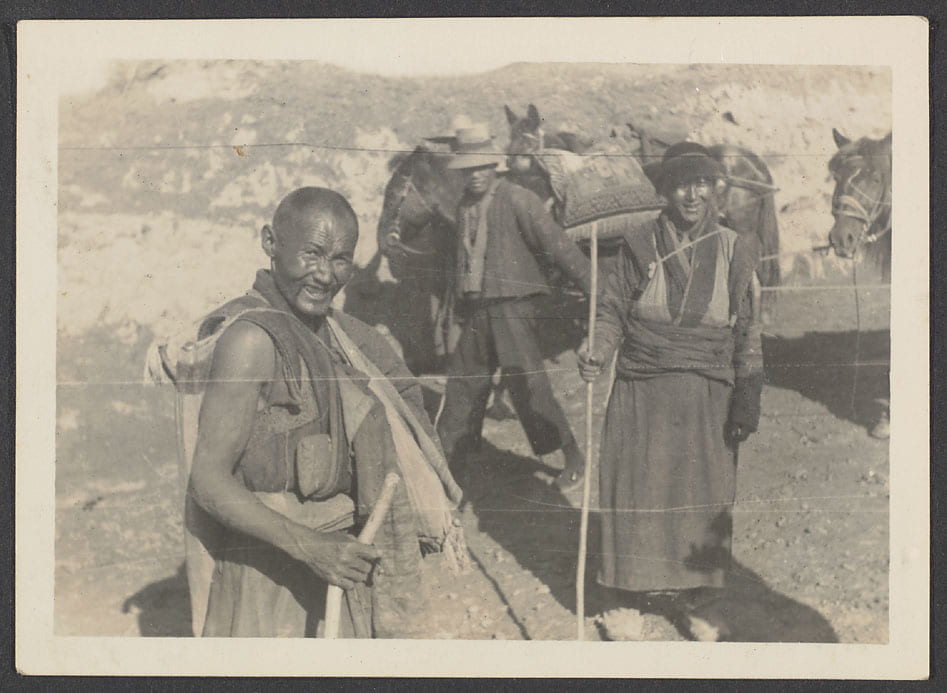
Tibetan pilgrims traveling to Kumbum Monastery, Qinghai, ca. 1933, photographed by Rev. Claude L Pickens Jr. HPC ref: Hv44-181.
It was never going to be easy to convince Amdo Tibetans and others on China’s ethnic borderlands that they were members of a Han-majority nation. And my book suggests that there are reasons to be deeply skeptical that if left intact the United Front could have worked its “magic.” Nevertheless, in its place the Party has been unable to erase the memory of the violence that accompanied Amdo’s integration into the PRC or the decades of state repression that followed. While the CCP’s warnings against Han chauvinism in the 1950s were reductionist, at least they contained an implicit acknowledgement that creating a nation out of the disparate remnants of a fallen empire rarely can be achieved through ethnocultural violence. And intermittently Party leaders have remembered this lesson, most noticeably for a brief moment in the aftermath of the Great Leap Forward and again during the early 1980s as the Deng Xiaoping regime sought to deal with the fallout from the Cultural Revolution. Each time, however, commitments to return to the stated (although never actualized) tenants of the 1950s United Front were quickly forgotten.
Most recently, in the wake of ethnic riots in Tibet in 2008 and Xinjiang in 2009 and the ascension of Xi Jinping to national leadership a few years later, Beijing seems to have jettisoned many of its gestures toward the relative pluralism represented by the 1950s United Front in favor of a nakedly assimilationist Han-centric nationalism. This can be most clearly seen in Xinjiang, where the CCP has pursued an unprecedented campaign of securitization, surveillance, mass imprisonment, and forced labor intended to erode the cultural identities of indigenous Muslim communities. However, it can also be found in Tibetan areas, where many of the mechanisms of both high-tech surveillance and street-level policing that have raised concerns in Xinjiang first originated. While violence (or the threat of violence) may prove to be an effective means of clamping down on ethnic unrest in western China and consolidating state control, there is little reason to believe that it will be any more successful than previous attempts to nation-build through coercion. Then again, it is sobering to think that nation building, as it was once understood, may no longer be the Party’s goal.

